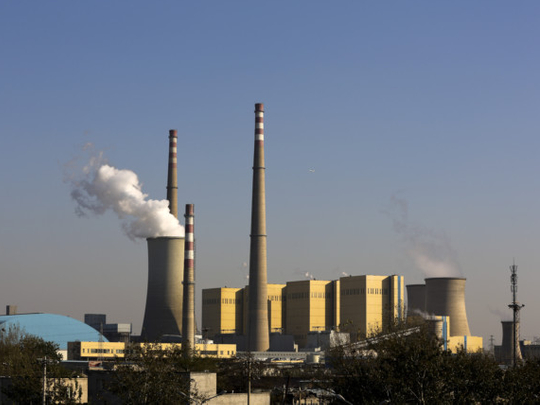
The announcement by US President Barack Obama and his Chinese counterpart Xi Jinping of an agreement to limit greenhouse gas emissions is a fine illustration of the difference between the real and ostensible functions of international summit meetings like the G20. Ostensibly, the G20 leaders were supposed to agree on a plan to increase the rate of growth of gross domestic product (GDP) by two percentage points for the next five years.
As an aspirational statement of what might happen given a perfect alignment of the economic stars, such an estimate would be highly optimistic. It would imply, for example, a doubling of the rate of growth in income per person for developed countries like Australia. As a policy goal, to be achieved by specific measures agreed at the G20 meeting, the target is about as realistic as establishing world peace or ending poverty. The G20 policy agenda is a grab bag of second-order measures (the most substantive is spending 0.5 per cent of GDP on infrastructure) that may marginally increase the long-term rate of economic growth, but will have no perceptible impact over the next five years. That is assuming if the G20 leaders can manage to push them through. All of the measures have been on the wishlists of various policy players for years, so the fact that they are not already in place suggests that they face big political or institutional obstacles in the countries concerned.
By contrast, the US-China agreement on climate change is the real deal and illustrates the real function of events like G20. By bringing the leaders of 20 or more major countries together in one place, G20 facilitates one-on-one or small group meetings between them, either to respond to immediate crises (Australian Prime Minister Tony Abbott and Russian President Vladimir Putin) or to announce the finalisation of negotiations that have been going on behind closed doors for months (Obama and Jinping). Substantively, the deal is the most important in the long and tortured history of international climate negotiations. This bilateral deal, along with the recent unilateral commitments of the European Union (EU), encompasses more than half of the world’s carbon dioxide emissions and the great majority of emissions from developed countries. It now seems highly likely that most countries meeting in Paris next year will bring commitments to substantial mitigation of emissions.
Of the two commitments, China’s promise to reach peak carbon emissions by 2030 at the latest is the most significant. With emissions in most developed countries already falling, offsetting rising emissions elsewhere, this means that global emissions will peak around the same time. The US commitment to accelerate reductions in emissions, reaching a level 26 to 28 per cent below 2005 levels in 2025 is important for a couple of reasons. First (although comparisons are problematic), it puts the US ahead of the EU — historically the leader in the transition to a decarbonised economy. Second, the fact that Obama could announce with reasonable confidence is an indication that the economic costs will be low and that the necessary policies can, if necessary, be implemented without Congressional assent. The commitments made so far leave the world with just enough time to stabilise atmospheric concentrations of greenhouse gases at 450 parts per million.
But there is every reason to think that, once these goals are achieved easily, more ambitious goals will be set. The remaining question is that of the holdouts: Significant emitters who have made no commitment, or no adequate commitment, to rein in their admissions. India is the most important and has legitimate objections to any deal that will require it to hold emissions permanently below the levels of richer countries. But there are many mechanisms, from technology transfer to a global allocation of tradeable carbon credits, that will permit wealthier countries to bear most or all of the costs of decarbonisation in India. Japan, which is still dealing with the sudden closure of most of its nuclear power stations following the Fukushima disaster is another special case. If a substantial portion are restarted and the recent expansion of renewables is continued, Japan should be back on track before long. If this cannot be done, Japan can buy credits to finance emissions reductions elsewhere (from India, for example).
That leaves two rich countries, whose governments have simply chosen to shirk the task rather than promote change in their economies: Canada and Australia. Canada has withdrawn from the Kyoto Protocol, while Australia has offered only a 5 per cent reduction in emissions relative to 2000 levels by 2020. It is hard to believe that this position can be sustained in the face of the US-China agreement.
The government remains officially committed to reductions of 15 to 25 per cent if the world as a whole reaches an ambitious agreement and it will be very difficult to argue that this goal has not been achieved, at least in broad terms. The formal G20 meeting will go ahead as planned, with lengthy discussions and a forgettable final communique. But the real action has already taken place, with the most significant international agreement of this century being announced in Brisbane.
— Guardian News & Media Ltd
John Quiggin is an Australian laureate fellow in economics at the University of Queensland.








